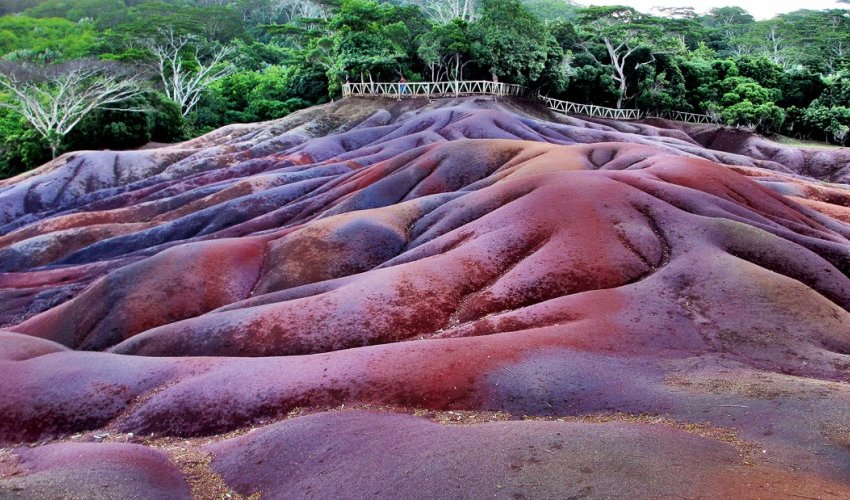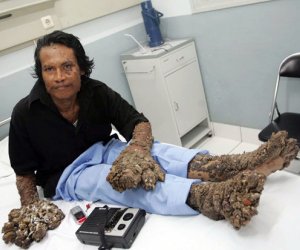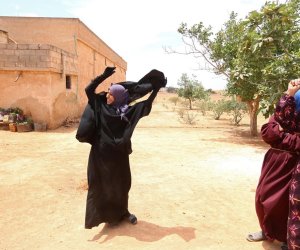Otherworldly travel destinations here on Earth

As astronomers discover more and more planets in distant star systems, interstellar travel has again sparked the imagination.
NASA now estimates that there are one billion Earth-sized planets orbiting stars similar to the sun, just in the Milky Way.
Russian businessman Yuri Milner has announced plans to develop a fleet of iPhone-sized satellites to visit our nearest neighbor, Alpha Centauri.
Even in a best-case scenario, such a venture is decades away.
In the meantime, scientists have staked out locations here on Earth to test new technology for lunar, Martian and other missions.
They're all in places that anyone can visit, with some determination.
Here are some of the places where space science is being conducted on Earth, and other places whose fantastic terrains inspire visions of what other worlds might look like.
One of the driest places on Earth, the Atacama is normally a lunar landscape marked by old lava flows, salt lakes and craggy mountains.
With only 15 millimeters of rainfall a year, the desert looks like a place where life simply failed to take hold.
But when rains do come, as they did in October 2015, dormant seeds that can lie in the ground for years burst to life.
Flowers carpet the desert in an explosion of pinks, purples, oranges and yellows, colors so vivid that the lush new landscape looks just as otherworldly as the barren one.
In 2005, NASA scientists discovered new microbial habitats, using a rover like the ones they deploy on Mars.
Charamel, Mauritius
Mauritius is most famous for its white sand beaches, but hidden on the southwest corner of the island is a small stretch of sand dunes in stripes of seven colors.
The sands remain a scientific mystery.
They formed from volcanic rock that over time decomposed and combined with other materials, creating sand in red, brown, violet, green, blue, purple and yellow.
Mysteriously, the sand never seems to erode, even in the heavy tropical rains.
And the colors always separate back into stripes.
A gift shops sell vials of sand that tourists can shake.
The sand eventually settles back into stripes on its own.Hell, Grand Cayman
Craggy black rocks cover an area about half the size of a football field, in a landscape so ominous it earned the area in Grand Cayman the name of Hell.
As lifeless as the rocks seem, they're actually the product of an unusual interaction between limestone and a type of algae.
The result is called "phytokarst" -- an almost lacy coating on the limestone produced by algae boring into the rock.
It happens in other parts of the Caribbean too, but Hell is the most postcard-worthy.
Flattop mountains rise so high that the rivers on them spill off into the clouds below.
Locally the mountains are called tepuis, which translates as "house of the gods."
For centuries people living near them refused to scale the summits for fear of deities and strange creatures believed to live on the mountains.
There are strange creatures at the top, but the most striking are plants cut off from the world and essentially forgotten by evolution.
These giant pitcher plants and unusual orchids look more like flora known otherwise from the prehistoric fossil record.
Angel Falls, the tallest waterfall in the world, flows off a cliff and inspired the setting of the Pixar movie "Up."
Namib Desert, Namibia
Namibia's vast desert looks so much like Mars that NASA actually sends scientists there to study it.
In 2010, researchers went into the desert looking for microscopic life that survives quite literally under a rock.
A particular type of quartz called hypoliths hold moisture from fog, and can be translucent enough to allow some light to pass through.
Scientists think these organisms could give clues to life in unforgiving places like Mars.
For tourists, hiking the enormous sand dunes feels like a Martian adventure, with dried riverbeds cutting through an endless red and orange landscape.
Pink Lake, Senegal
Sand dunes separate Lake Retba from the Atlantic, but the water inside is even saltier than the ocean.
The water gets saltier than the Dead Sea, which in Senegal's tropical climate makes the lake home to a micro-algae that turns the water the color of strawberry juice.
That gives Lake Retba its more common name, Lac Rose, or Pink Lake.
The banks turn blazing white in the sun, as men harvest salt from the lake bed for sale
(CNN)









www.ann.az
Similar news
Similar news
Latest news 
More news 



































 Photo
Photo 

 Video
Video 

